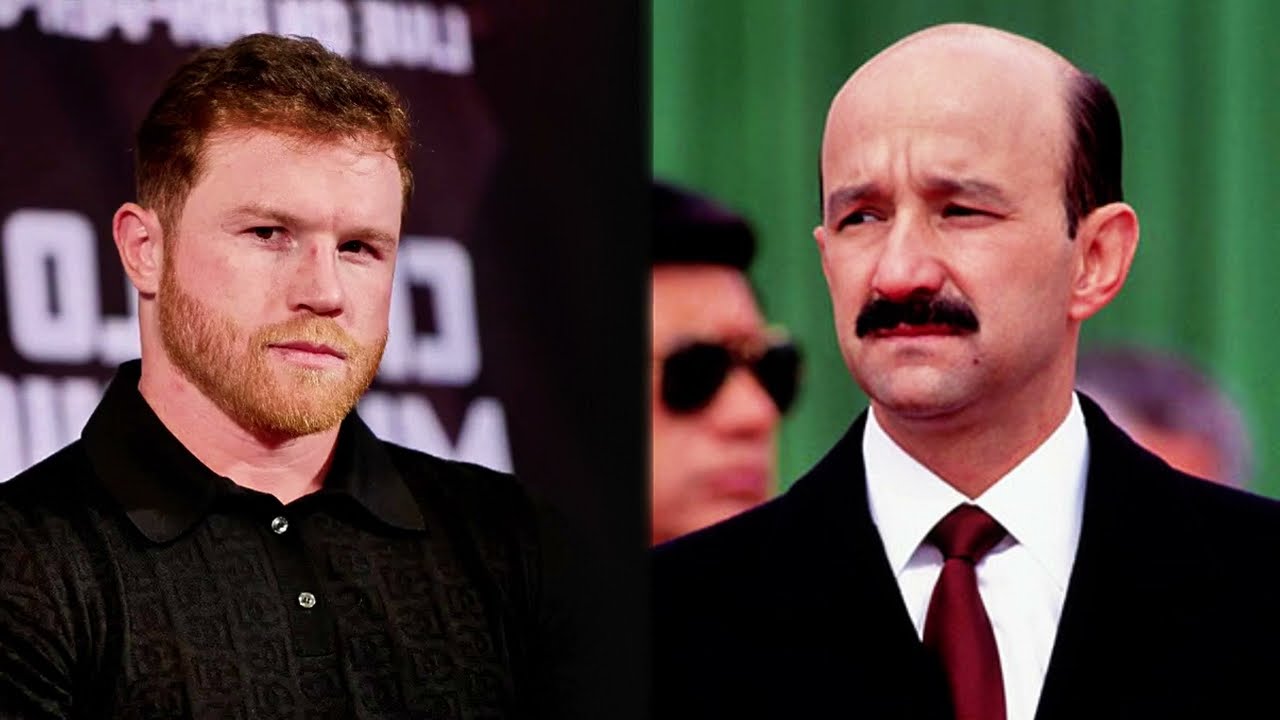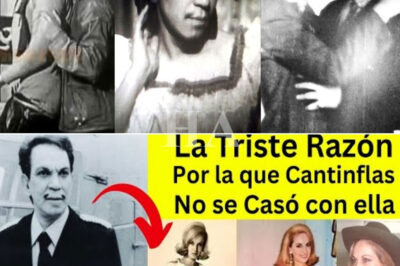SALINAS lanza recado a CANELO: “usted no sabe nada” y CANELO responde y sorprende
In the world of politics and sports, rarely do the two spheres collide in such a dramatic and profound way as they did when former President Carlos Salinas de Gortari publicly criticized boxing champion Saúl “Canelo” Álvarez. The ensuing controversy not only captivated the public but also led to a remarkable transformation in the conversation surrounding public policies in Mexico.
It all began with a routine interview. Canelo, in Mexico City to promote his upcoming fight, was asked by an ESPN Deportes reporter about his thoughts on Jóvenes Construyendo el Futuro (Youth Building the Future), a government program aimed at providing scholarships to young people for workforce training. Canelo’s response was blunt, yet thoughtful: “I believe the program is well-intentioned, but from what I’ve seen, a lot of the money gets lost in bureaucracy, or doesn’t reach those who need it the most.” The boxer went on to explain his personal experience in Jalisco, where his foundation works closely with local youth, many of whom were enrolled in the program but received little to no support.

What seemed like a small, perhaps even trivial comment, quickly escalated. Three days later, during a speech at a rural development event, Salinas, in his signature academic tone, took a swipe at the world-renowned boxer. “It’s curious how now everyone is an expert in public policy,” Salinas remarked, smirking, “We have boxers offering opinions on social programs as if they had studied economics at Harvard.” The former president’s comments went viral almost immediately, stirring a national debate that soon turned from sports to the future of Mexico’s most vulnerable communities.
Salinas, who had long been a figure of political power and influence, seemed to underestimate the public’s attachment to Canelo, a hero to millions across the country. His insult to the boxer, suggesting that hitting people in the ring didn’t qualify one to speak on national policy, backfired. As expected, the media frenzy exploded, and social media was flooded with reactions. Memes depicting Canelo knocking out Salinas and the former president delivering a lecture in a boxing ring took over the digital landscape. Public opinion quickly split into two camps: some backed the former president’s position, arguing that public policies required technical expertise, while others sided with Canelo, emphasizing that his lived experience made his opinion just as valid as any expert’s.
In the midst of this media storm, Canelo, who was training in San Diego, took his time to reflect. His manager advised him to ignore Salinas and stay focused on his upcoming fight. But Canelo, never one to back down from a challenge, had other plans. He wanted to respond—but not in the way people expected. He decided to hold a press conference in one of Mexico’s poorest neighborhoods, where the effects of the Jóvenes Construyendo el Futuro program were felt most keenly.
The press conference, held at his boxing gym in Guadalajara, was an unexpected turn in the saga. There, surrounded by young people who had benefitted from his foundation’s work, Canelo presented a detailed analysis of the government program. Backed by data and research, Canelo highlighted the program’s inefficiencies, the delays in payments, and the systemic barriers that prevented vulnerable youth from accessing opportunities. He acknowledged that while the program’s concept was necessary, its implementation was flawed.
“What I’m trying to do is elevate the conversation,” Canelo told reporters. “It’s not about who’s right or wrong. It’s about finding real solutions for these young people.” The response to Canelo’s speech was overwhelming. Rather than a fiery retort, the boxer’s presentation was calm, methodical, and deeply rooted in the experiences of those most affected by the issues he was addressing.
Canelo’s critique of Salinas took an unexpected turn when he proposed a constructive solution. Instead of continuing the verbal sparring, he offered to debate the former president in a public forum. This wasn’t about personal attacks, he explained, but about finding common ground and using their respective experiences to improve the country.
The former president, after days of silence, finally responded—not with an acceptance of the challenge, but with a proposal for a more inclusive forum. Salinas acknowledged that while his previous comments might have been “imprecise,” the dialogue Canelo had sparked was valuable. He recognized the merit in the boxer’s perspective and suggested a broader discussion involving experts, beneficiaries, and other key players.
What followed was a surprising turn of events. Rather than clashing on national television, Salinas and Canelo joined forces to create a new pilot program in Jalisco. This collaboration, born out of conflict, showcased the power of dialogue and action. It wasn’t about who won the argument, but about how they could work together to create a program that truly addressed the needs of Mexico’s most vulnerable youth.
The new program, combining elements of both Salinas’ technical expertise and Canelo’s grassroots knowledge, launched with a focus on real-world solutions. It included streamlined processes to ensure that young people in marginalized communities could access the support they needed without the bureaucratic obstacles that had been a constant frustration.
Months later, the success of the program was undeniable. Canelo’s involvement in social issues transcended his role as a boxer, and he had successfully used his platform to bring about change. His story became a symbol of how individuals from all walks of life could engage in public discourse, regardless of their formal education or social standing. It was a powerful reminder that sometimes the greatest change comes not from the ivory towers of academia or politics, but from the voices of those who truly understand the struggles of everyday people.
The public debate between Salinas and Canelo had sparked more than just controversy; it had ignited a movement that reshaped the way social issues were discussed and tackled in Mexico.
News
EL BEBÉ DEL MILLONARIO NO COMÍA NADA, HASTA QUE LA EMPLEADA POBRE COCINÓ ESTO…
El bebé del millonario no comía nada hasta que la empleada pobre cocinó esto. Señor Mendoza, si su hijo no…
At Dad’s Birthday, Mom Announced «She’s Dead to Us»! Then My Bodyguard Walked In…
The reservation at Le Bernardin had been made three months in advance for Dad’s 60th birthday celebration. Eight family members…
Conserje padre soltero baila con niña discapacitada, sin saber que su madre multimillonaria está justo ahí mirando.
Ethan Wells conocía cada grieta del gimnasio de la escuela. No porque fuera un fanático de la carpintería o un…
“ME LO DIJO EN UN SUEÑO.” — Con la voz entrecortada, FERDINANDO confesó que fue su hermano gemelo, aquel que partió hace años, quien le dio la noticia más inesperada de su vida.
¿Coincidencia o señal? La vida de Ferdinando Valencia y Brenda Kellerman ha estado marcada por la disciplina, la fe y…
“NO ERA SOLO EL REY DE LA COMEDIA.” — Detrás de las cámaras, CANTINFLAS también guardaba un secreto capaz de reescribir su historia.
Las Hermanas del Silencio Durante los años dorados del cine mexicano, cuando la fama se tejía entre luces, celuloide y…
Me casaré contigo si entras en este vestido!, se burló el millonario… meses después, quedó mudo.
El gran salón del hotel brillaba como un palacio de cristal. Las lámparas colgaban majestuosas, reflejando el oro de las…
End of content
No more pages to load












